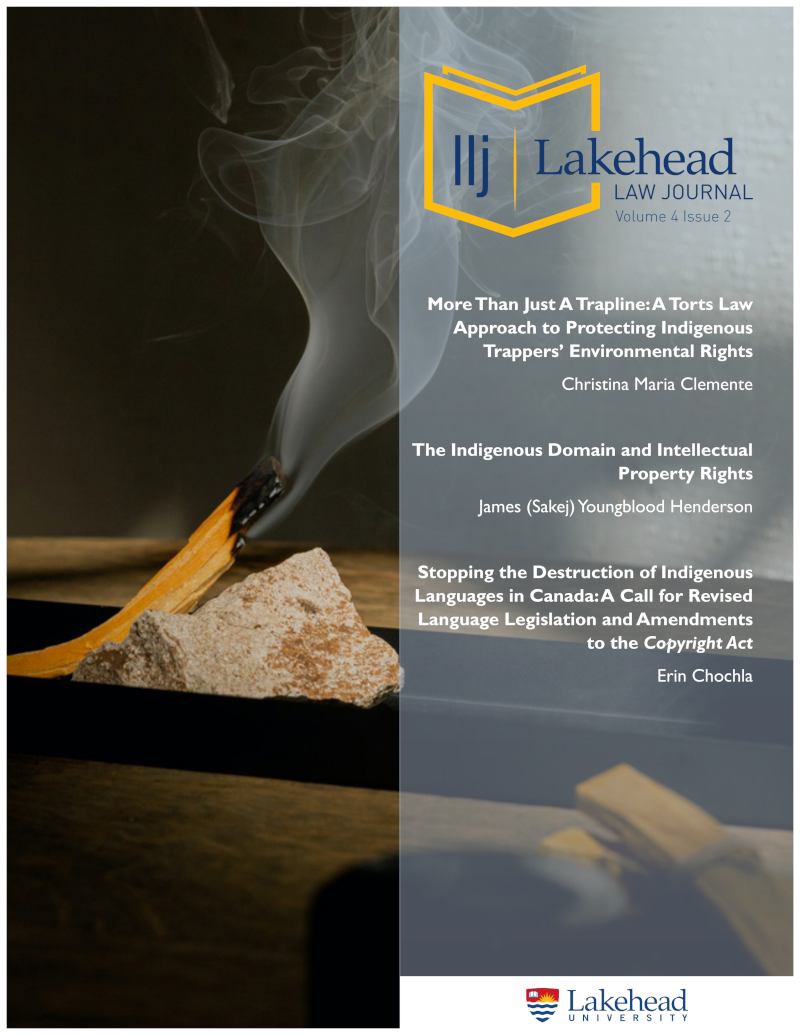More Than Just A Trapline: A Torts Law Approach to Protecting Indigenous Trappers' Environmental Rights
Abstract
As I sit to write this paper in April 2019, a community of trappers from the Hollow Water Traditional Territory located on the eastern shore of Lake Winnipeg are being forced to pack up early with a significantly diminished harvest of animals. This is a result of preliminary clearcutting and trail disruption caused by Canadian Premium Sand, a silica sand mining company that has proposed to start operation adjacent to Hollow Water Traditional Territory. This disruption to the trappers' ability to hunt and harvest was done without consent, and it is anticipated that the future activity of the mining company will further interfere with trappers' ability to use their traplines. This same story continues to play out in numerous communities across Canada where industrial activity directly and indirectly harms wildlife and plants. Consequently, trappers are forced to take action to protect the use of their traplines. This paper explores the potential role that tort law may play in helping Indigenous trappers protect their traplines from future harm or receive compensation for past harms.Downloads
Published
2021-10-05
Issue
Section
Articles
License
Authors retain original copyright and grant the LLJ first publication rights. Articles published in this open access journal are free to use, with proper attribution, for educational and non-commercial purposes.


